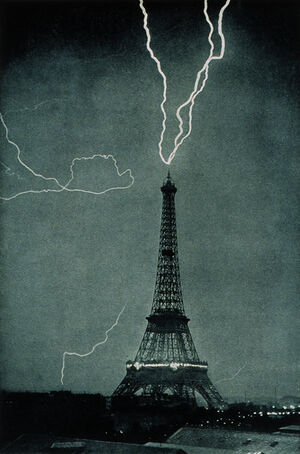Lightning (nonfiction): Difference between revisions
Jump to navigation
Jump to search
No edit summary |
No edit summary |
||
| Line 9: | Line 9: | ||
== In the News == | == In the News == | ||
<gallery | <gallery> | ||
</gallery> | </gallery> | ||
== Fiction cross-reference == | == Fiction cross-reference == | ||
* [[Crimes against physical constants]] | |||
* [[Gnomon algorithm]] | |||
* [[Gnomon Chronicles]] | |||
* [[Rumbustious lightning]] | * [[Rumbustious lightning]] | ||
| Line 20: | Line 23: | ||
* [[Electricity (nonfiction)]] | * [[Electricity (nonfiction)]] | ||
* [[Light (nonfiction)]] | * [[Light (nonfiction)]] | ||
* [[Physics (nonfiction)]] | |||
External links: | External links: | ||
| Line 26: | Line 30: | ||
[[Category:Nonfiction (nonfiction)]] | [[Category:Nonfiction (nonfiction)]] | ||
[[Category:Concepts in physics (nonfiction)]] | |||
[[Category:Light (nonfiction)]] | [[Category:Light (nonfiction)]] | ||
Revision as of 17:24, 31 August 2018
Lightning is a sudden electrostatic discharge during an electrical storm between electrically charged regions of a cloud (called intra-cloud lightning or IC), between that cloud and another cloud (CC lightning), or between a cloud and the ground (CG lightning).
The charged regions in the atmosphere temporarily equalize themselves through this discharge referred to as a strike if it hits an object on the ground, and a flash if it occurs within a cloud.
Lightning causes light in the form of plasma, and sound in the form of thunder.
Lightning may be seen and not heard when it occurs at a distance too great for the sound to carry as far as the light from the strike or flash.
In the News
Fiction cross-reference
Nonfiction cross-reference
External links:
- Lightning @ Wikipedia
